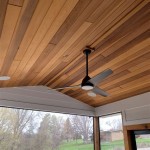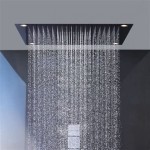Are you looking for eco-friendly materials for your ceiling? Sustainable ceiling materials offer a great way to save on energy and reduce your carbon footprint. This guide will provide you with an overview of the different types of sustainable ceiling materials, their advantages and disadvantages, and how to choose the right material for your project.
Types of Sustainable Ceiling Materials
When it comes to sustainable ceiling materials, there are a variety of options available. Here are some of the most popular eco-friendly materials:
- Recycled Wood: Recycled wood is a great option for sustainable ceilings. It is made from wood that has been salvaged from old buildings and furniture, making it a great way to reduce waste while creating a unique and beautiful look.
- Cork: Cork is a renewable material, making it a great option for sustainable ceilings. It is lightweight, fire-resistant, and provides excellent insulation.
- Bamboo: Bamboo is a rapidly renewable material, making it one of the most eco-friendly ceiling materials available. It is also extremely durable and resistant to moisture.
- Linoleum: Linoleum is a type of flooring material that is made from renewable materials like cork and linseed oil. It is durable and easy to maintain, making it an ideal choice for ceiling materials.
- Recycled Glass: Recycled glass is a great way to reduce waste while creating a stunning look. It is also very durable and eco-friendly.
Advantages of Sustainable Ceiling Materials
Sustainable ceiling materials offer many advantages over traditional materials. Here are some of the most important benefits:
- Cost Savings: Sustainable ceiling materials are usually more cost-effective than traditional materials. This is because they are often made from recycled materials, which are more affordable than buying new.
- Durability: Sustainable ceiling materials are usually more durable than traditional materials. This is because they are often made from recycled materials, which are more resistant to wear and tear.
- Eco-Friendly: Sustainable ceiling materials are usually more eco-friendly than traditional materials. They are often made from recycled or renewable materials, which means they have a smaller carbon footprint.
- Healthier Environment: Sustainable ceiling materials are often made from non-toxic materials, making them a healthier choice for your home or office. This can help reduce allergies, asthma, and other health problems.
Disadvantages of Sustainable Ceiling Materials
Although sustainable ceiling materials offer many advantages, there are also some drawbacks to consider. Here are some of the most common disadvantages:
- Higher Installation Costs: Sustainable ceiling materials may cost more to install than traditional materials. This is because they often require more specialized tools and installation methods.
- Difficult to Find: Sustainable ceiling materials can be difficult to find in some areas. This is because they are often made from recycled or renewable materials, which may not be readily available in some areas.
- Limited Options: Sustainable ceiling materials may have fewer options than traditional materials. This can make it difficult to find the perfect material for your project.
How to Choose the Right Sustainable Ceiling Material
When choosing a sustainable ceiling material, it is important to consider your needs, budget, and environment. Here are some tips to help you make the right choice:
- Consider Your Needs: Consider your needs first when choosing a sustainable ceiling material. Think about the size of the room, how much insulation you need, and what type of look you want.
- Research Your Options: Research the different types of sustainable ceiling materials available. Compare their advantages and disadvantages, and find the one that best meets your needs.
- Budget for Installation: Budget for the cost of installation when choosing a sustainable ceiling material. Make sure you factor in any additional tools or services that may be required.
- Check Local Availability: Check the availability of sustainable ceiling materials in your area. Make sure you can easily obtain the materials you need.
Conclusion
Sustainable ceiling materials offer a great way to save on energy, reduce your carbon footprint, and create a unique and beautiful look. This guide provided an overview of the different types of sustainable ceiling materials, their advantages and disadvantages, and how to choose the right material for your project. With the right research and planning, you can find the perfect eco-friendly material for your ceiling.















Related Posts








